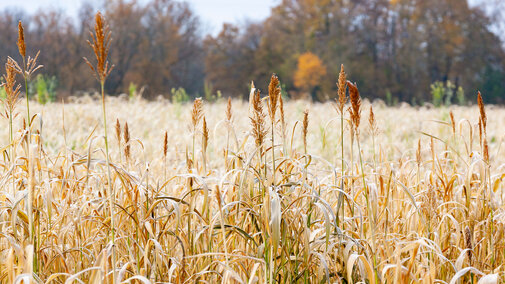Drought Recovery Essentials
So, what happens to forage plants during a drought? Nearly three-fourths of Nebraska’s pastures are classified in poor to very poor condition from the drought. Stick around and I’ll help you understand the drought recovery process for pastures.
The goal of drought planning should focus on reducing negative impacts on forage plants that occur during the drought from overgrazing. Following a return to more favorable growing conditions hopefully next spring and summer, practicing proper grazing management could aid pasture recovery after the drought. Pastures can recover from drought with proper management, but overgrazing and prolonged stress can limit productivity for many years.
Drought alone rarely kills well-managed pasture plants. The most noticeable effect on forage plants during droughty conditions are reduced forage production. Root growth is also limited which restricts the ability of the forage plant to extract deeper soil moisture and nutrients.
Sometimes, drought-stressed pastures are in better condition than they appear. This can be especially true for pastures that were well-managed prior to drought. In many cases, pastures can quickly recover from drought. The key elements for pasture recovery are rain and rest.
Frosted Sorghum and Prussic Acid
By Brad Schick
Colder temperatures have already caused some freezing in the Great Plains and Midwest. What have those temperature done to the forages and how can livestock be kept safe?
Short-term freezing temperatures may cause sorghum species such as sorghum-sudangrass or any grain (milo) or forage sorghum to become lethal to livestock. Prussic acid forms when plant cell membranes are broken due to freezing and allows the chemicals in the cells to mix. This forms a cyanide compound that can be deadly to livestock if consumed. Sudangrasses have the lowest risk while forage and grain sorghum have the highest. The millet species do not have prussic acid issues.
The good news is that after seven days, the toxic chemicals dissipate into the air. Every time there is a freeze (without temperatures low enough to completely kill the plants), that seven-day clock resets just like the 30-minute lightning delay at football games. The new growth on sorghums that have had frost damage are very dangerous as they have the highest concentrations of prussic acid. The forage can also be cut and hayed to reduce prussic acid by at least 50%.
If there is a chance of freezing temperatures, remove livestock from the pasture and wait the seven days before grazing once again. The hours immediately after a frost have the highest level of toxic compounds. If there is regrowth in the days after a freeze, wait to begin grazing until those shoots are 15-18 inches tall or five to seven days after the plant has been completely killed by the frost. If sorghum family plants have had extra nitrogen applied or are growing in high nitrogen soils, the risk of prussic acid is even higher.
Grazing Drought-stressed Crop Residue
Welcome rains have occurred in many Nebraska regions, but our hot and dry summer impacts are extending into the fall and drought-stressed forage stalks are deteriorating more rapidly than normal. These conditions along with shorter-than-normal grass pastures may be motivating livestock producers to begin fall crop residues grazing earlier.
When it comes to stalk residue, grain sorghum stover will retain nutrient grazing value longer than corn. This year, though, rapidly declining stalks quality may be encouraging earlier residue grazing of both corn and sorghum soon after grain harvest. Both crop residues provide good nutrition for mid- to late-gestation cattle following fall harvest. Sorghum leaves have similar quality to corn husk and leaves, but their quality still decreases over time.
Although both residues provide the highest nutrient content when grazed soon after grain harvest, prioritize grazing cornstalk fields first. Corn leaves tend to detach from stalks within one to two months after harvest and then blow out of stalk fields; thus, dramatically lowering grazing nutritional content. In contrast, grain sorghum stover leaves remain attached to their stalks much longer into the winter and early spring retaining nutritional value.
Previous grain sorghum yields can be used to set optimum grazing stalking rates. For example, grazing rates might be one acre per cow per month for every 100 bushels of harvested sorghum.
Unlike corn residue, grain sorghum stover can have prussic acid toxicity along with possible nitrate toxicity risk, especially if cattle are forced to graze the lower third of drought-stressed stalks. Other sorghum stover residue advantages include being less prone to lodging and lower acidosis (founder disease) from grazing spilled grain than corn.
More crop residue research information is available on CropWatch and UNL Beef.

